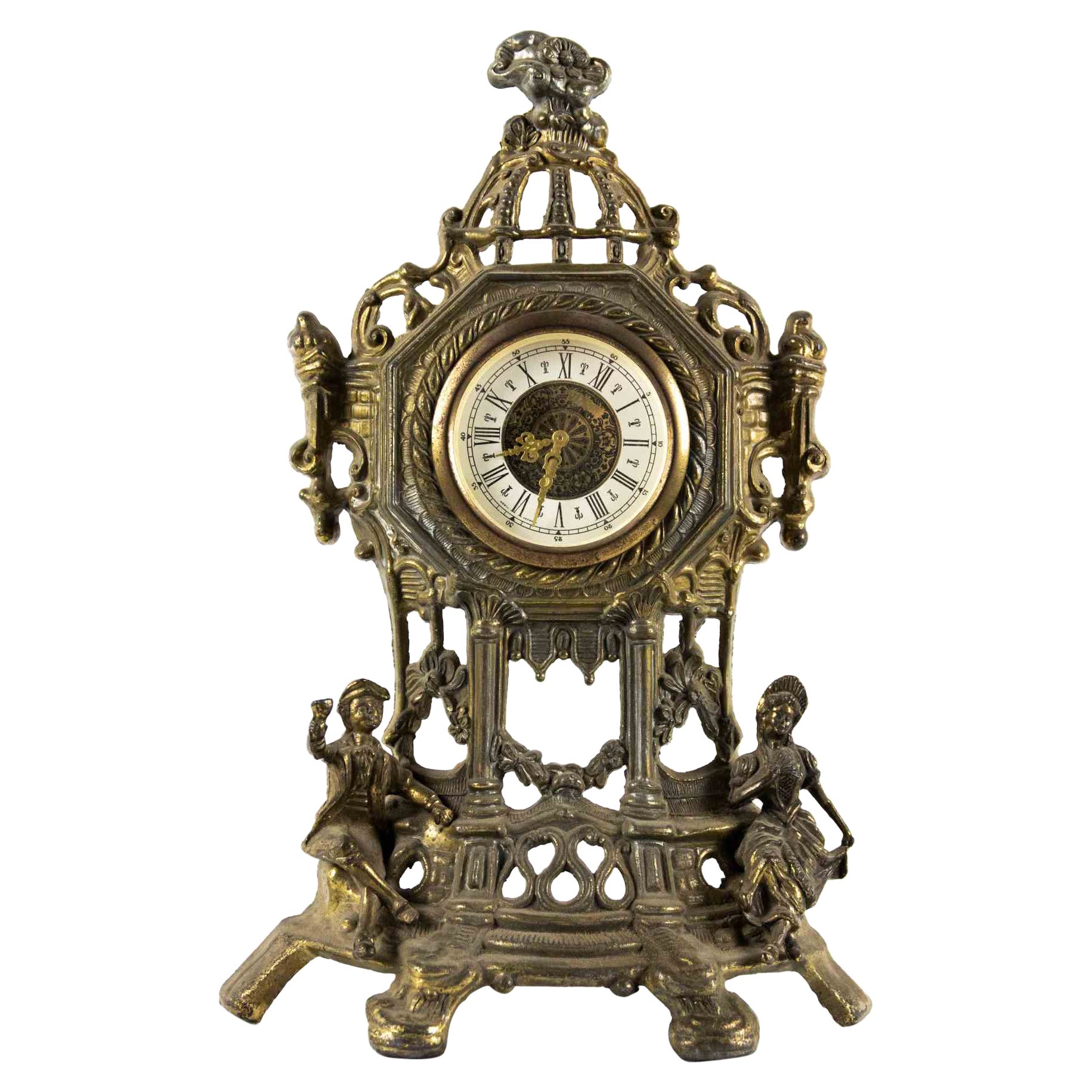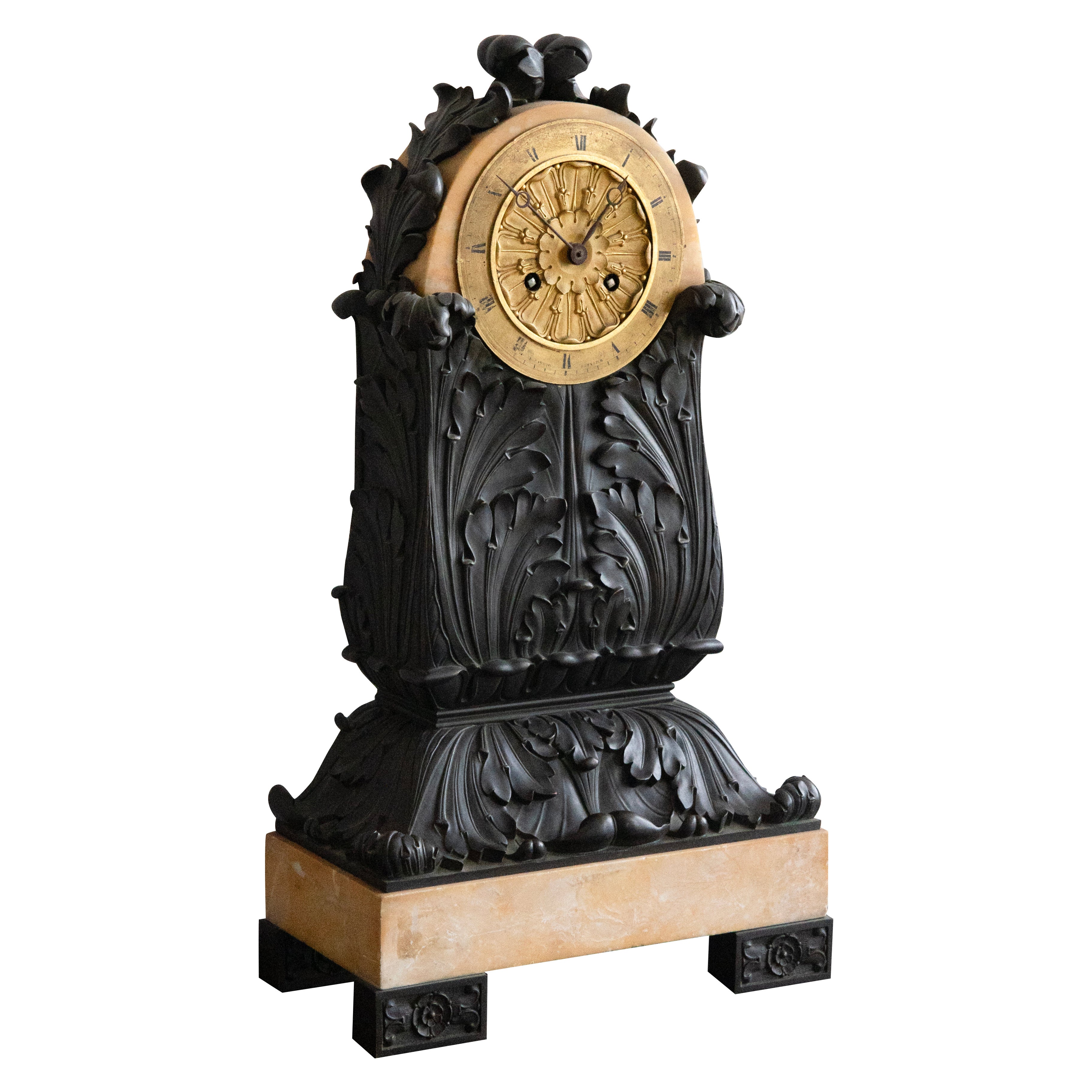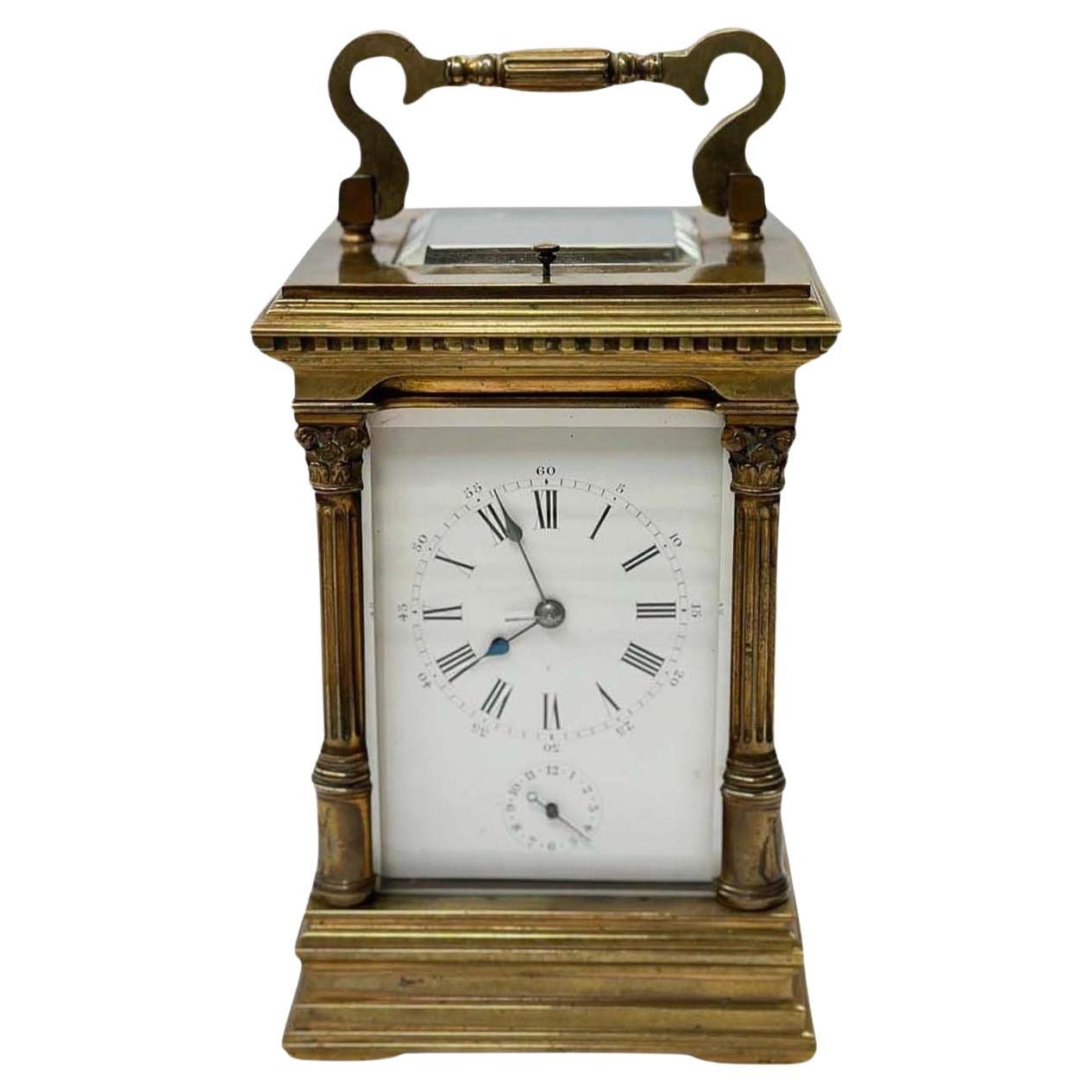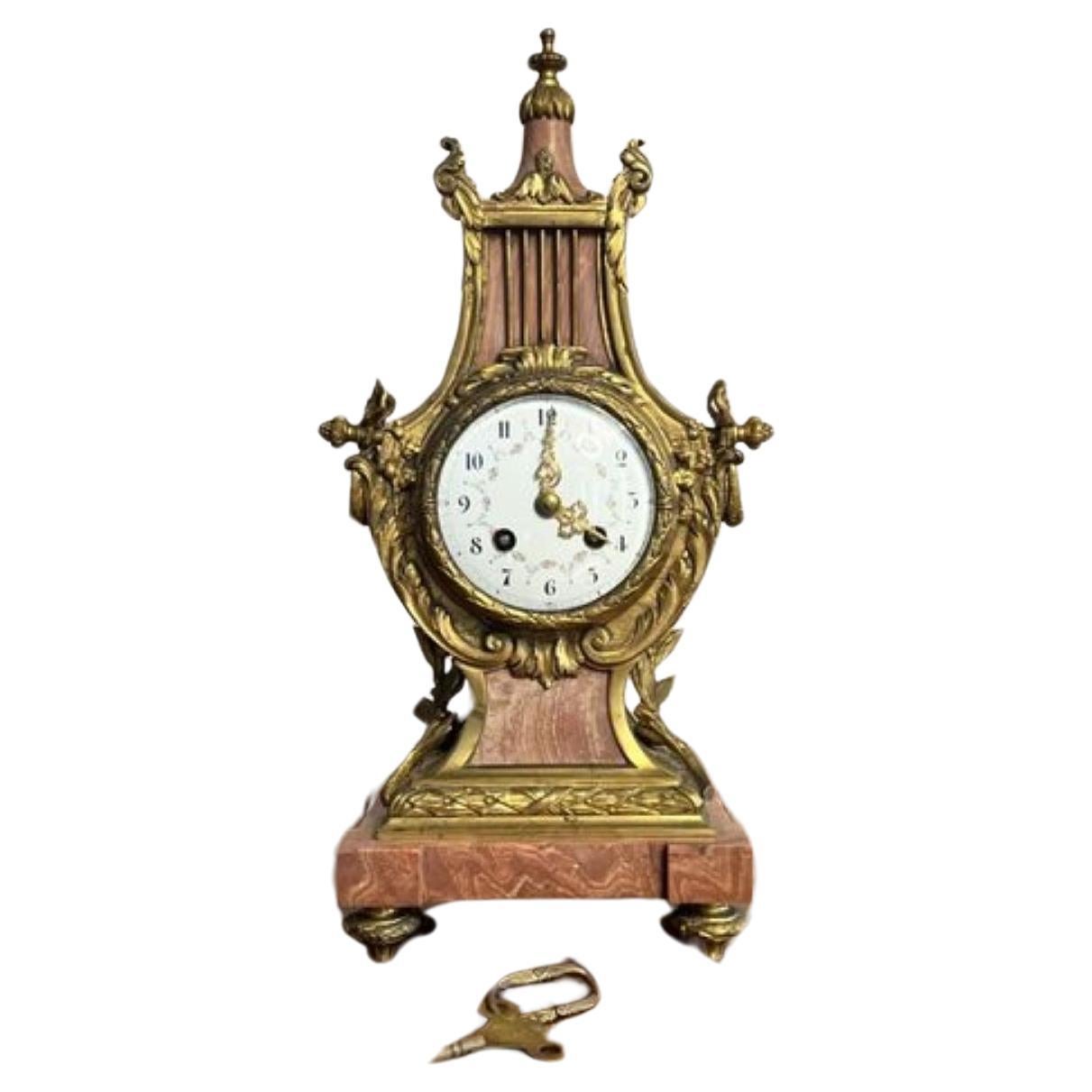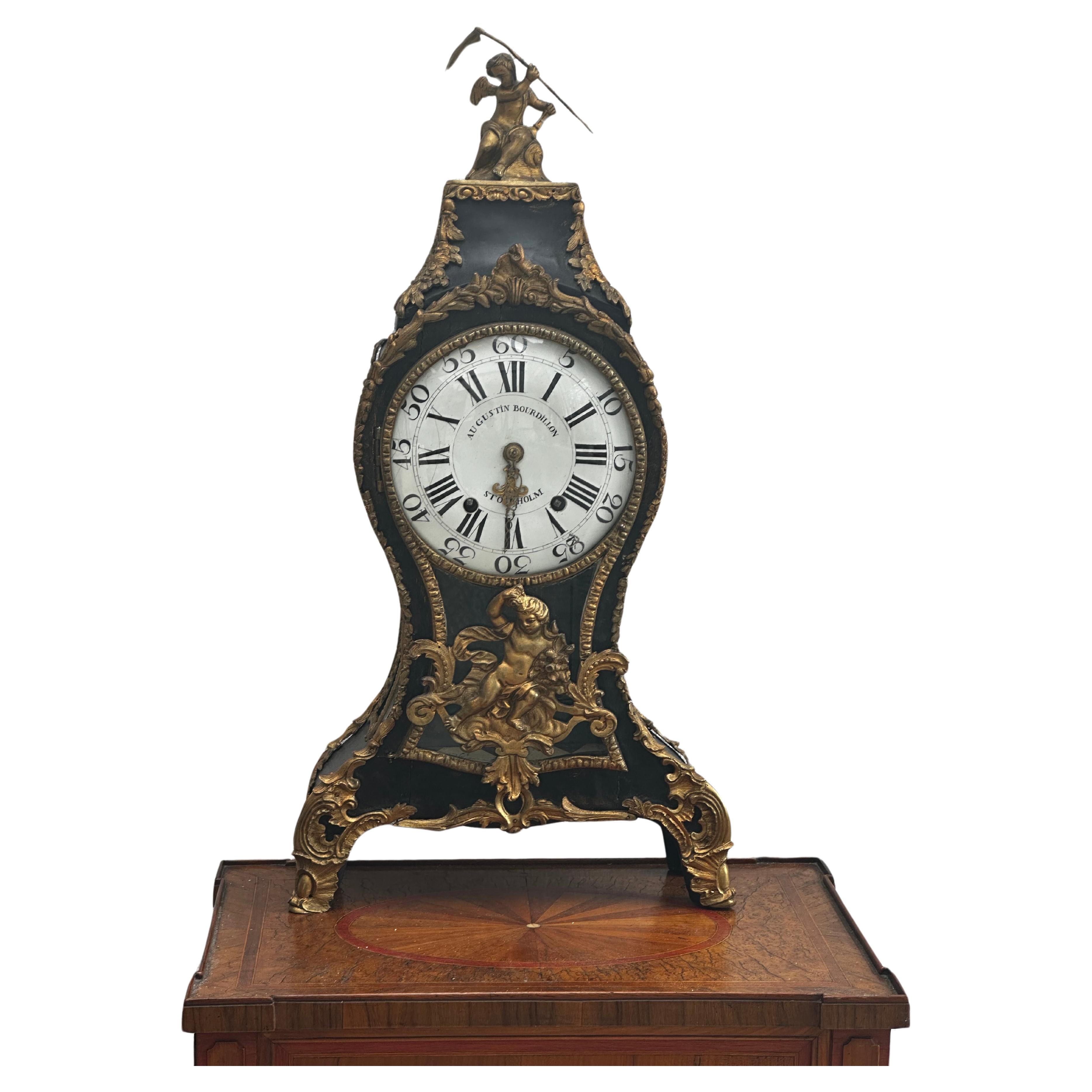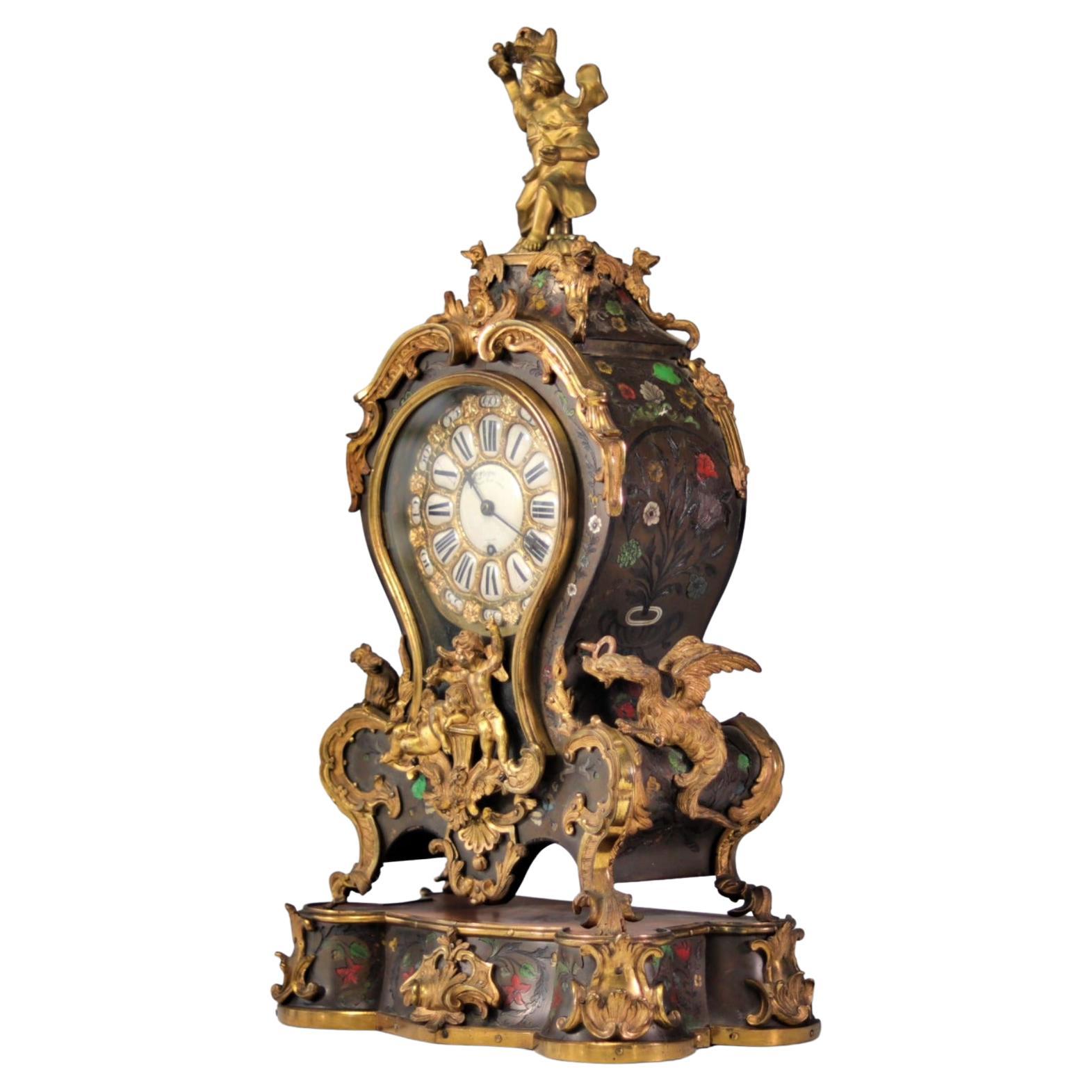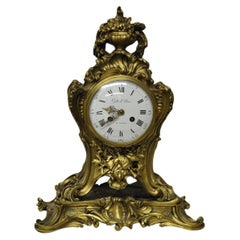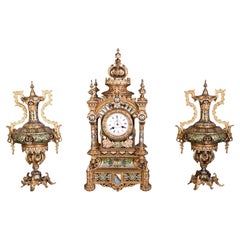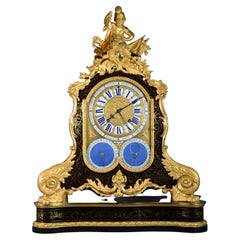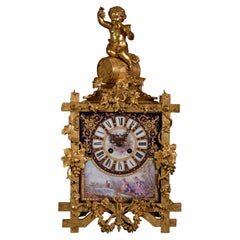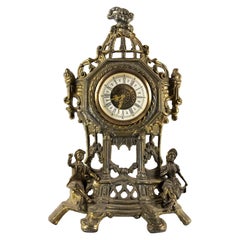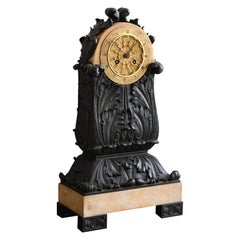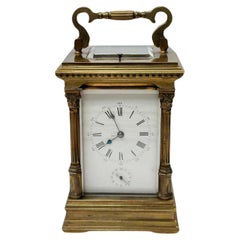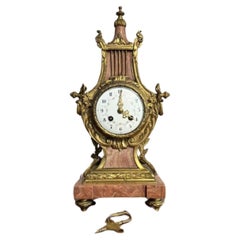Items Similar to Jules BRATEAU, Four-Sided Clock On A High Base, 1900
Want more images or videos?
Request additional images or videos from the seller
1 of 15
Jules BRATEAU, Four-Sided Clock On A High Base, 1900
$28,861.42
£21,007.91
€24,000
CA$39,283.31
A$43,940.85
CHF 22,867.08
MX$540,926.90
NOK 290,916.63
SEK 272,937.15
DKK 182,645.22
Shipping
Retrieving quote...The 1stDibs Promise:
Authenticity Guarantee,
Money-Back Guarantee,
24-Hour Cancellation
About the Item
Made in 1900, our clock is a major work by sculptor and goldsmith Jules Brateau. This renowned craftsman won several medals at world's fairs.
Jules Paul Brateau (1844-1923) was a goldsmith, jeweller and pewter potter. He studied at the École nationale supérieure des arts décoratifs in Paris before working with a number of jewellers. From 1878 onwards, he devoted himself to pewter goldsmithing, which he worked hard to revive. He was awarded a silver medal at the 1878 Universal Exhibition and a gold medal at the 1889 Universal Exhibition, and was a member of the jury at the 1900 Universal Exhibition.
Mounted on a central foot, the clock has four finely decorated and chiseled faces. The decoration, in low relief, is a tribute to the artists of the Italian and French Renaissance. The foliage, for their part, is in the spirit of Art Nouveau fashion.
Under the copper-colored dial, representing a silver sun, a winged adolescent rests near a fire.
The iconography is rich in symbols. On one side of the clock, a winged woman, holding a cornucopia, rides the wheel of time or destiny.
On the back of the clock, Adam and Eve are depicted. The original couple echoes the snake adorning the central foot, made of a sunflower branch resting on a blooming carnation. Emerging from a rich plant decor, a Latin inscription means “Let the happy hours be numbered in full”.
Four examples of this clock are known to date, their decorations have some variations. One of them is kept in a private collection. Its blue enamelled dial, the color of the sky, is decorated with a golden sun. Celebrated in the press, our clock was reproduced in the magazine Art et Decoration in July 1900.
- Creator:Jules BraTeau (Artist)
- Dimensions:Height: 13.78 in (35 cm)Width: 3.94 in (10 cm)Depth: 3.94 in (10 cm)
- Style:Renaissance Revival (Of the Period)
- Materials and Techniques:
- Place of Origin:
- Period:1900-1909
- Date of Manufacture:1900
- Condition:
- Seller Location:SAINT-OUEN-SUR-SEINE, FR
- Reference Number:Seller: 135001stDibs: LU7662240206842
About the Seller
No Reviews Yet
Recognized Seller
These prestigious sellers are industry leaders and represent the highest echelon for item quality and design.
1stDibs seller since 2022
Typical response time: 8 hours
- ShippingRetrieving quote...Shipping from: SAINT-OUEN-SUR-SEINE, France
- Return Policy
Authenticity Guarantee
In the unlikely event there’s an issue with an item’s authenticity, contact us within 1 year for a full refund. DetailsMoney-Back Guarantee
If your item is not as described, is damaged in transit, or does not arrive, contact us within 7 days for a full refund. Details24-Hour Cancellation
You have a 24-hour grace period in which to reconsider your purchase, with no questions asked.Vetted Professional Sellers
Our world-class sellers must adhere to strict standards for service and quality, maintaining the integrity of our listings.Price-Match Guarantee
If you find that a seller listed the same item for a lower price elsewhere, we’ll match it.Trusted Global Delivery
Our best-in-class carrier network provides specialized shipping options worldwide, including custom delivery.More From This Seller
View AllLouis XV ormolu clock by Gille l'Ainé
Located in SAINT-OUEN-SUR-SEINE, FR
Beautiful little antique clock in the Louis XV style made by the clockmaker Gille l'Ainé in the 19th century. The dial is signed "Gille l'Ainé, à Paris". The curved forms, embellishe...
Category
Antique 19th Century French Louis XV Mantel Clocks
Materials
Bronze
Persian-style double-sided clock and garnitures, Charles Stanislas MATIFAT
By Charles Matifat
Located in SAINT-OUEN-SUR-SEINE, FR
Charles Stanislas Matifat is the creator of this ensemble consisting of a double-sided enameled bronze clock and a matching pair of large garnitures. Dated 1851 and bearing his signa...
Category
Antique 19th Century European Islamic Table Clocks and Desk Clocks
Materials
Bronze, Enamel
Important Boulle Marquetry Clock, 19th Century
By Alfred Emmanuel Louis Beurdeley
Located in SAINT-OUEN-SUR-SEINE, FR
This exceptional cartel presents a remarkable work of bronze and an ornamentation resuming the Boulle marquetry that can be attributed to Alfred-Emmanuel Beurdeley (1847-1919), a great Parisian cabinetmaker of the second half of the 19th century. The mechanism of our astronomical clock...
Category
Antique Mid-19th Century French Louis XIV Mantel Clocks
Materials
Bronze
Napoleon III Style Clock Made Out of Porcelain and Gilded Bronze
Located in SAINT-OUEN-SUR-SEINE, FR
This beautiful clock was made out of porcelain and gilded bronze during Napoleon III period. The porcelain dial indicates the hours with Roman numerals. It is decorated with gilded r...
Category
Antique 19th Century French Napoleon III Mantel Clocks
Materials
Bronze
Japonist Wall Clock in Carved Wood and Hardstone – 19th Century
Located in SAINT-OUEN-SUR-SEINE, FR
A striking Japonist wall clock crafted in dark carved wood, adorned with inlaid panels of deep green hardstone. The radiating fan-shaped structure is enriched with fantastical and my...
Category
Antique 19th Century French Japonisme Decorative Art
Materials
Multi-gemstone
Arthur WAAGEN Japanese-style clock set
Located in SAINT-OUEN-SUR-SEINE, FR
By Arthur WAAGEN (active 1869-1910).
Japanese-style clock set. Made out of spelter.
Representing a young woman dressed in a kimono
Category
Antique 19th Century French Japonisme Mantel Clocks
Materials
Ormolu
You May Also Like
Vintage Table Clock, Early 20th Century
Located in Roma, IT
Vintage clock is an original object realized in the early 20th century.
Original brass and glass.
Made in Germany.
Beautiful original vintage clock created in Germany betwe...
Category
Early 20th Century German Table Clocks and Desk Clocks
Materials
Brass
19th c, French Empire Table Clock
Located in Allerum, SE
19th century French, Charles X bronze, brass and sienna marble table clock from the Empire period. Signed Ravrio Bronzier, ca 1820 France.
Category
Antique Early 19th Century French Empire Table Clocks and Desk Clocks
Materials
Marble, Metal, Brass, Bronze
On Hold
$9,800
French Early 20th Century Carriage Clock by A. Dumas
Located in Los Angeles, CA
Stunning French brass carriage clock with glass protection by A. Dumas. It is designed with four fluted columns, a dial plate with Roman numerals and more minutes above an alarm sett...
Category
Early 20th Century French Carriage Clocks and Travel Clocks
Materials
Bronze
Unusual antique Victorian quality French mantle clock
Located in Ipswich, GB
Unusual antique Victorian quality French mantle clock, having an unusual shaped ornate gilded metal and pink marble case decorated with finely cast...
Category
Antique Early 19th Century Early Victorian Mantel Clocks
Materials
Metal
Late 19th Century table clock, made in Stockholm by Auguste Bourdillon
Located in SE
A table clock made in Stockholm by Auguste Bourdillon, 1728- 1799. He were a manufacturer of clocks and watches in Geneva and then in Stockholm 1761 - 1...
Category
Antique 1770s Swedish Rococo Table Clocks and Desk Clocks
Materials
Bronze
Rare 18th Century English Clock
Located in Madrid, ES
Rare 18th century English clock
Marquetry
Weight: 9.20 kg
England
Sizes: H 62cm L 31cm
very good condition.
Category
Antique 18th Century English British Colonial Table Clocks and Desk Clocks
Materials
Bronze
More Ways To Browse
Blue Carnation
Sunflower Table
Italian Renaissance Side Table
Antique Snake Table
Snake Art Nouveau
French Renaissance Desk
Blue Enamel Snake
Snake Side Table
French Renaissance Clock
Art Nouveau Sunflower
Antique Pewter Side Table
Bulova Table Clock
Congreve Clock
Congreve Rolling Ball Clock
Congreve Rolling Ball
Deco Waltham Clock
Faberge Clocks In The Manner
Ge Vintage Clock
